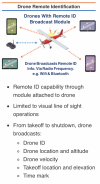Yesterday, we posted a video about drone tracking technology that's sparked many interesting reactions, from "I don't care about being tracked, I fly legally" to "this is an invasion of privacy".
Do you think this tech will be more or less intrusive than Remote ID? How do you feel knowing this tech has been around for nearly 4 years? You may have been caught flying illegally but nothing happened, does that make you feel better or worse about the tech?
There's no right or wrong answer, but a civil discussion is requested.
Do you think this tech will be more or less intrusive than Remote ID? How do you feel knowing this tech has been around for nearly 4 years? You may have been caught flying illegally but nothing happened, does that make you feel better or worse about the tech?
There's no right or wrong answer, but a civil discussion is requested.










